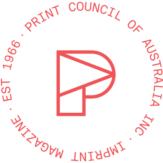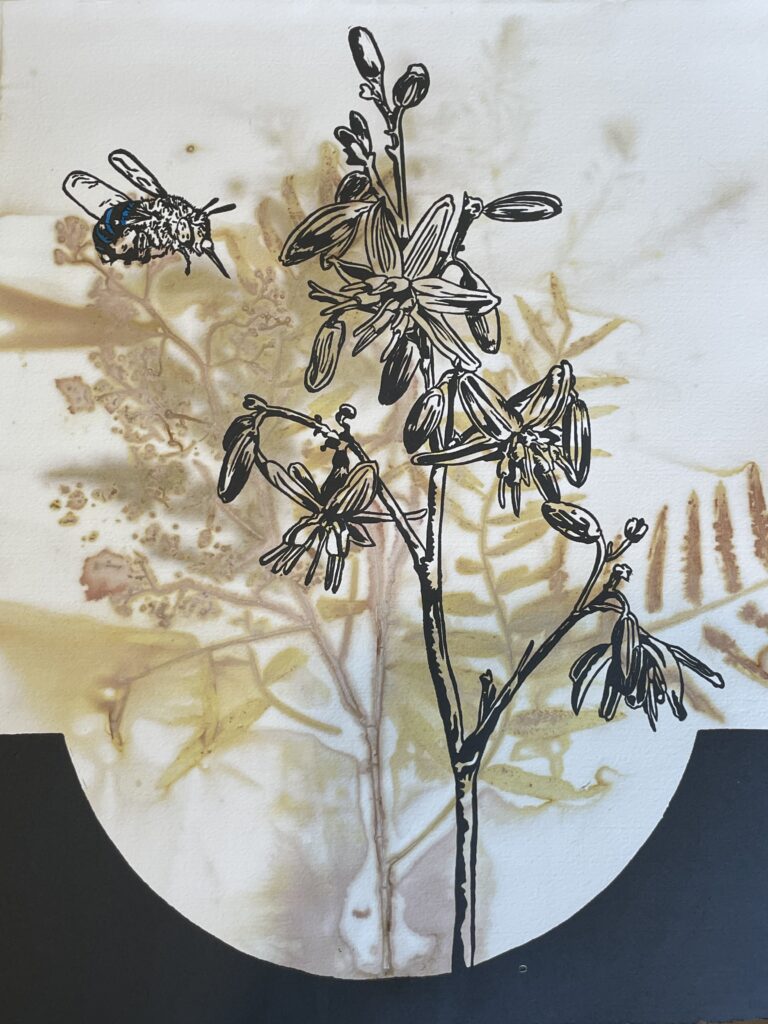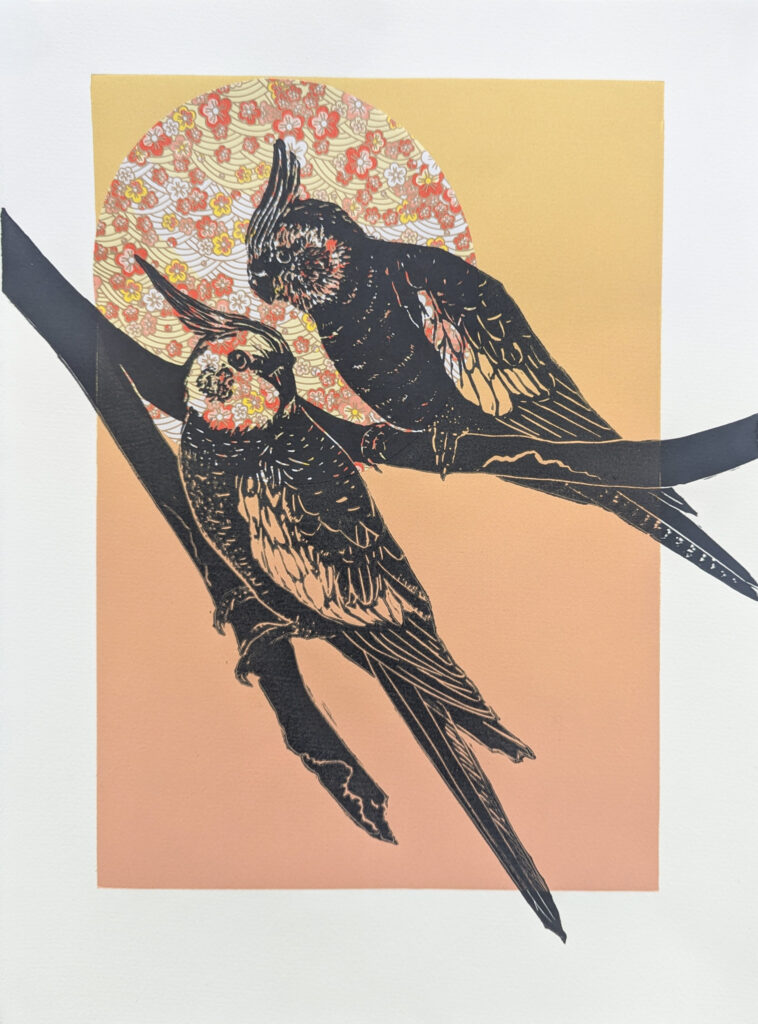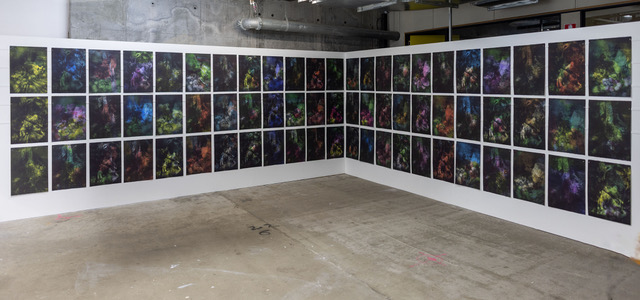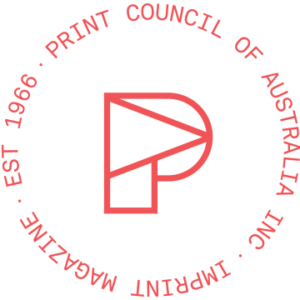Top:
Melissa J. Harvey, 2019, spraying pulp.
Photography: Felicity Jenkins
Below:
Lois Waters, Warp 1, 2025, etching ink on kozo paper on board, H. 30x W. 20.8 x D. 2.2cm
Melissa J. Harvey, Transversing the crease, 2025, Pulp prints made from recycled cotton T shirts and aqueous pigments, H. 41 x 29 cm
Lois Waters, Warp 2, 2025, etching ink on kozo paper on board, H. 30x W. 20.8 x D. 2.2cm
Melissa J. Harvey, Underlying, 2025, Pulp prints made from recycled cotton T shirts and aqueous pigments, H. 29 x 41 cm
Lois Waters, Warp 4, 2025, etching ink on kozo paper on board, H. 30x W. 20.8 x D. 2.2cm
Melissa J. Harvey, Fold Over, 2025, Pulp prints made from recycled cotton T shirts and aqueous pigments, H. 29 x 41cm
All images copyright and courtesy of the artists/photographer.
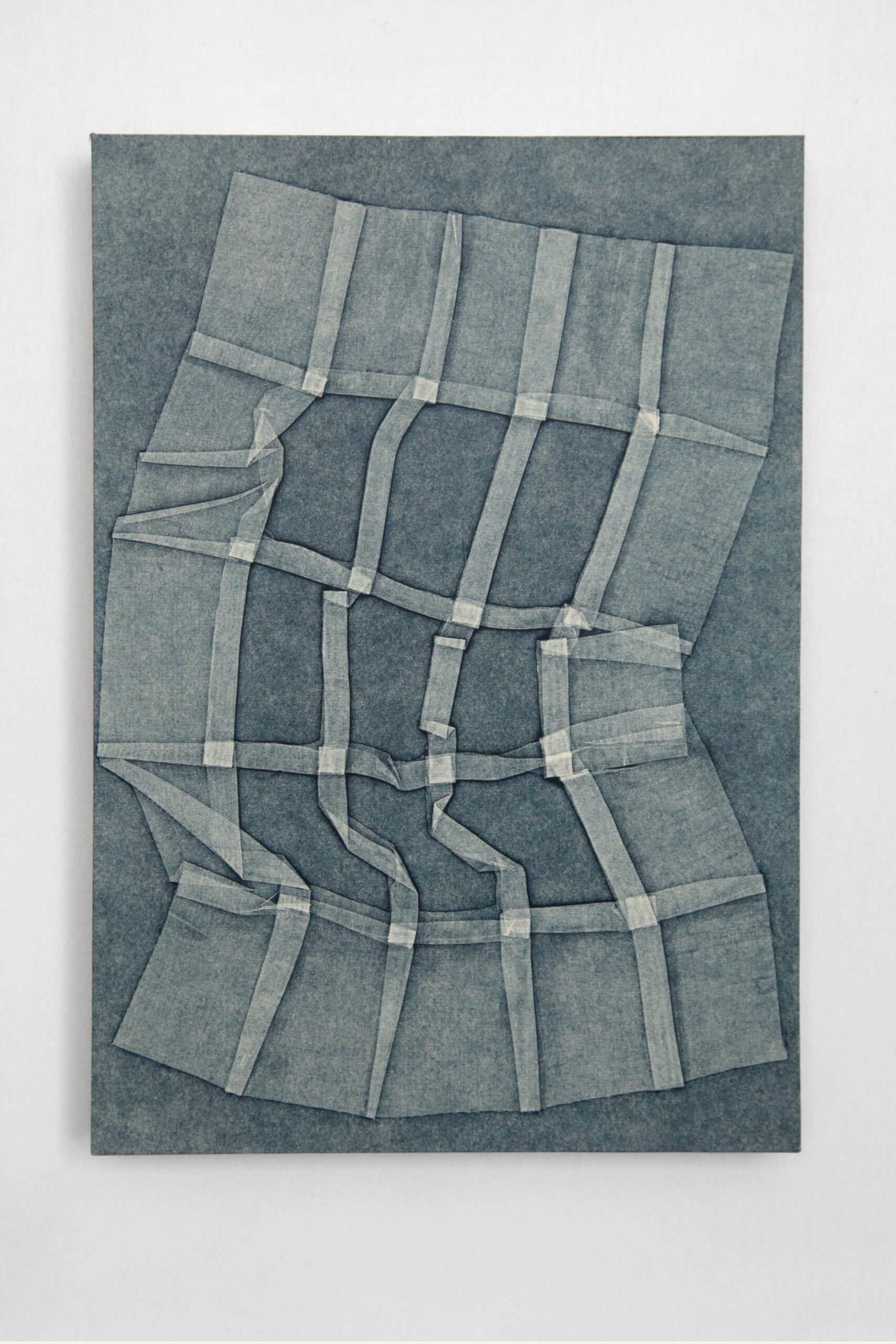
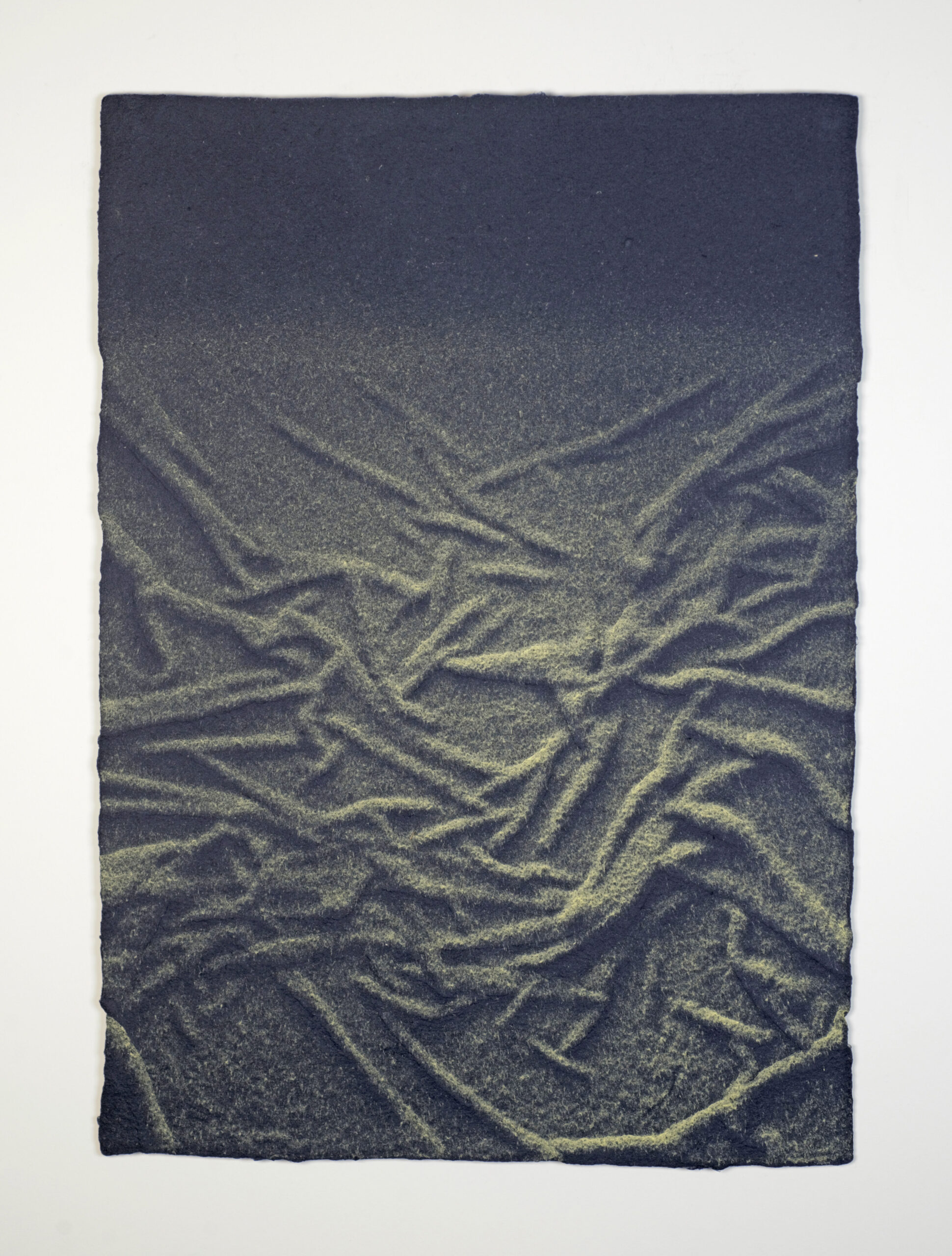
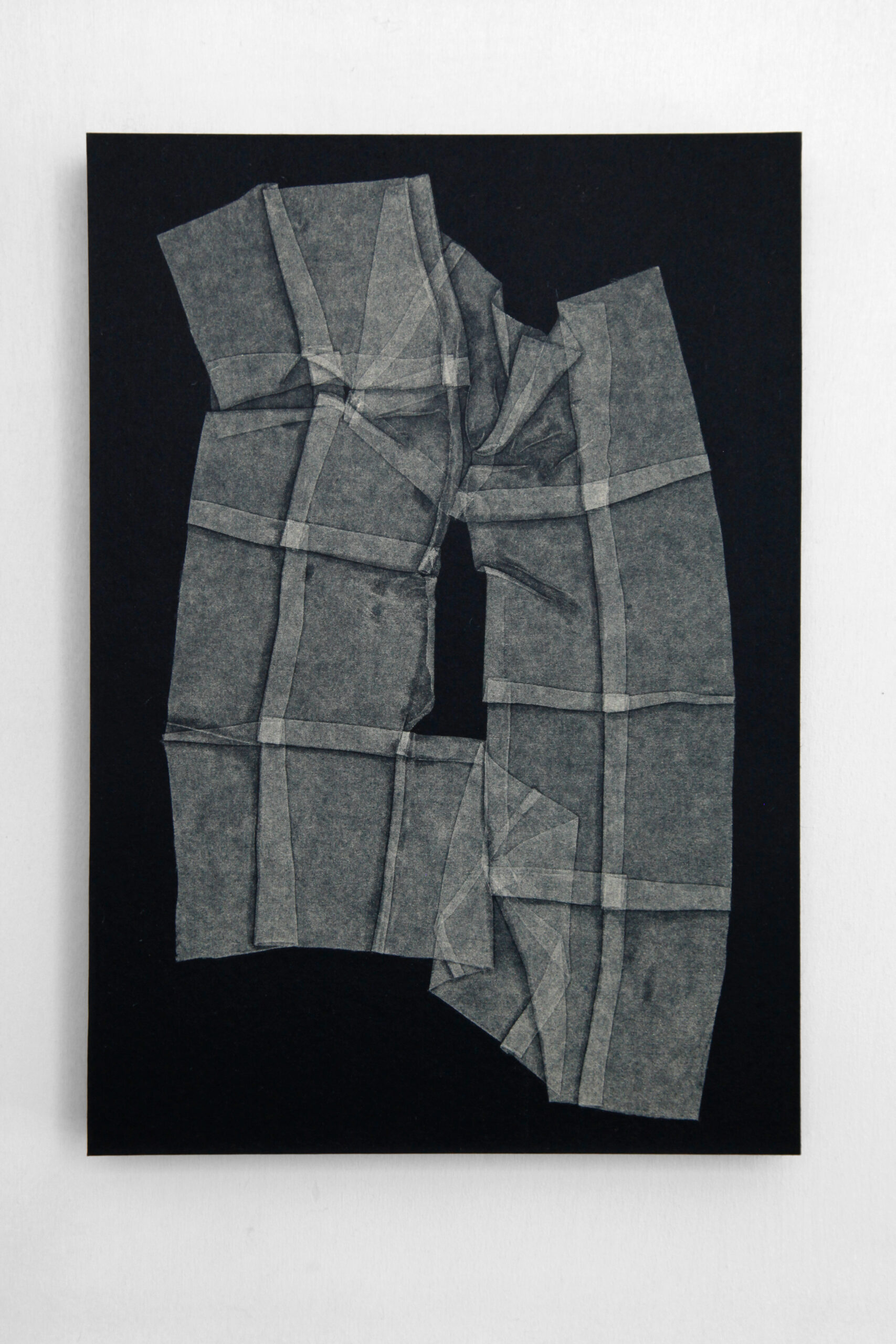
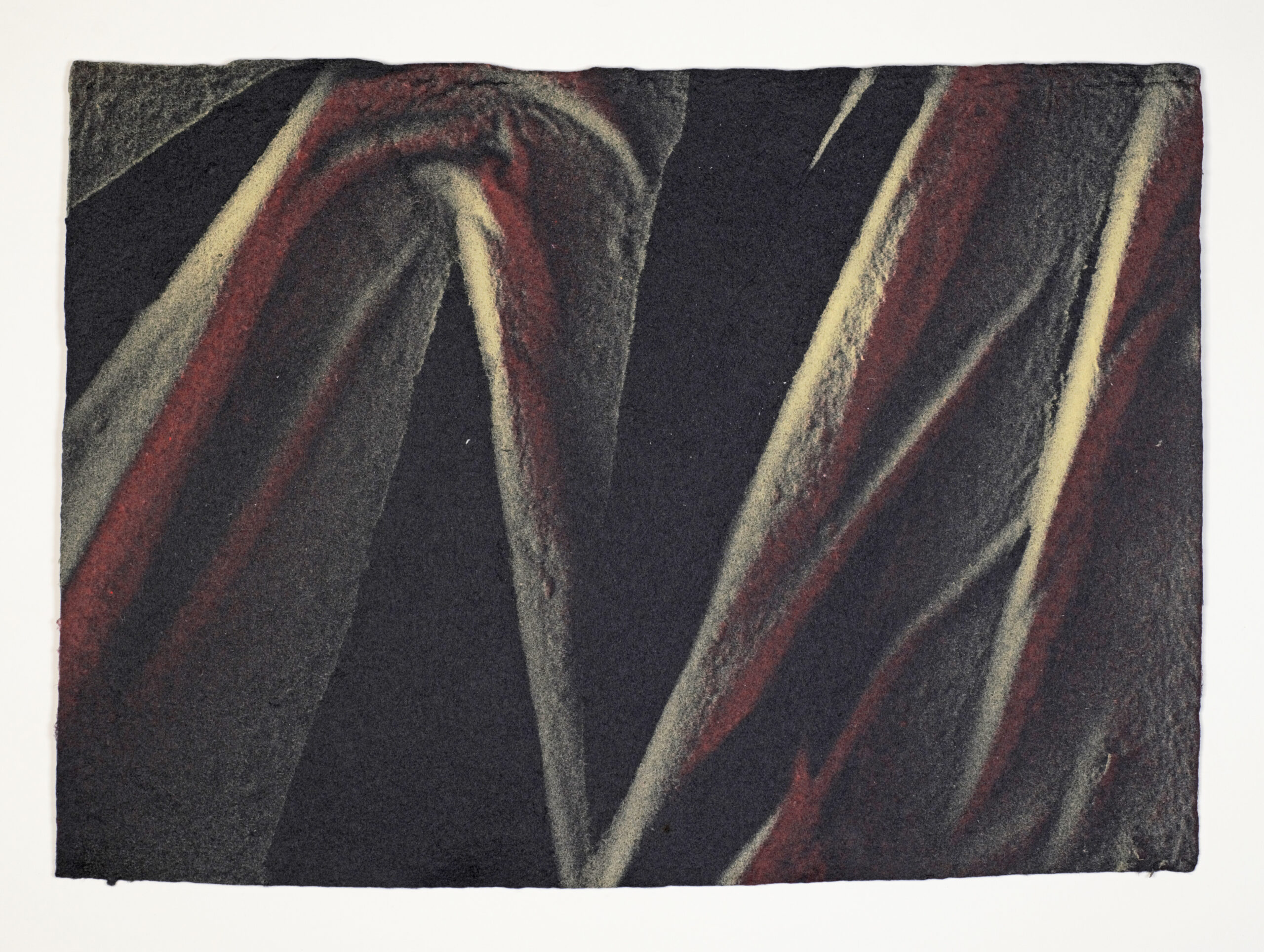
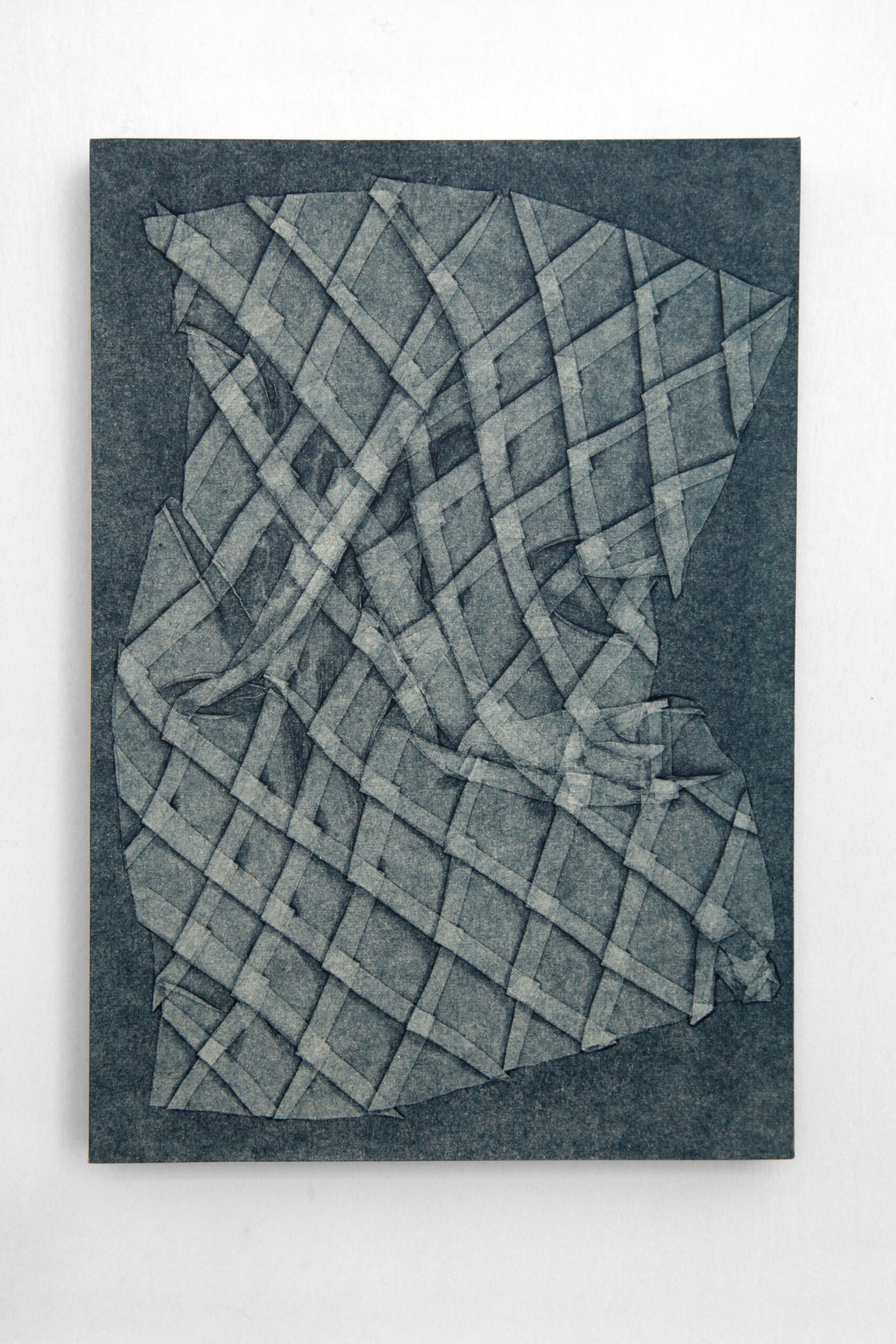

Q: What were some of the foundation ideas for this exhibition project?
MJ: Lois and I started exchanging ideas about creating a collaborative body of work a couple of years ago. We began by sharing small mixed media objects to get a sense of how we each work and formulate ideas. Through this process, we discovered commonality in the symbolic elements that often appear in our work – for Lois, it was the fold, and for me, it was the vessel.
In my practice, I reuse cotton clothing and domestic cloth by breaking down the items through a beating process to create pulp. I then take the different coloured pulp to my studio in buckets and work with this medium by spraying it on silk screens or using a mould and deckle. Sometimes I use found items as moulds to press the fibre into. I incorporate stencilling, impressions, and pulp spraying to inject imagery into my work. All these methods function as containers or vessels that hold memories, medium, fibre, and equipment – they’re all part of the act of making.
During a recent residency at the Morgan Conservatory in the USA, I started manipulating wet sheets of paper by creasing and folding them. I would then use a mixture of cotton linter and aqueous pigment to mark these manipulations. This experience, combined with my collaboration with Lois, made it natural for me to further explore the fold in my own practice. I wanted to capture the moment of material manipulation – the actual act – through pulp spraying, then press and return it to a paper-like form.
LW: I remember in our early collaborations that we talked a lot about how our work considers the actions of the body on materials, and materials on the body. Both of our work captures a moment of physical manipulation, which is expressed in very different ways. For me the fold speaks to the potential of the body to shift and change – each fold is an opportunity for expansion or collapse. This was something we embodied when exchanging objects, seeing opportunity in each other’s materials.
In my practice I use hand-pleated silk as modular printing plates, to produce singular impressions. When pleated and modified in relation to the grain of the fabric, these plates can be pulled and manipulated in different ways. Through controlled pressure-printing, the moments of collapse in the silk surface and its fine weave produce tones and textures reminiscent of aquatint. I wrap these floating images onto board, to give them a contradictory sense of weight.
Q: How did the artwork selection take place?
MJ: I wanted to tell the story of my process – where it started and where it ended before the exhibition. So, I selected from what I’d created that would best tell that story.
LW: I wanted to bring the freedom I felt in our early collaborations into my print practice. I started reworking textile plates from previous projects, finding latent possibilities in discarded materials. What originally felt like a constraint allowed me to work in new ways.
The series of works I’ve selected begins with my established approach to working with textile plates and shows a movement towards increasing experimentation with the possibilities of textile manipulation. Each work is the beginning of a new thread that I’ll continue to expand on.
Q: How does the exhibition manifest – what do visitors experience?
MJ: I hope visitors go on an exploratory journey, moving around the work – left, right, and back – zooming in and out. It’s like they’re traveling across the work but also going into it. I want viewers to be left not quite sure what they’re seeing at first, wondering how the artwork was created while feeling the presence of my hand in the work.
LW: Similarly, I want my works to draw viewers in from a distance and also hold their resolution up close. While each work is a flattened imprint of a three-dimensional form, the printed impression somehow has more depth than the original. These works explore what is lost and gained through information transfer: the printed impression takes on new resonance, with fidelity to something beyond the original matrix. I hope that the works remain compelling and somewhat unfixed for visitors, as the final image sits somewhere between surface, object and simulation.
I hope that the relationship between simulated form and actual form in our works when presented side-by-side accentuate the qualities of both. I hope that visitors enjoy finding the connections between our works, and how through collaborating we’ve also deepened our engagement with our own practices.
Q: What are some of the key works and what subject matter do they deal with?
MJ: I’m a process-driven artist, and the act of making allows me to work through my everyday experience of being in this world. This body of work is quite emotive, even in the colours I’ve chosen and the way I’ve played with creating a feeling of light reflecting on the pieces. At first it wasn’t intentional, but during the making process, this is where I naturally went. I’ve used titles like ‘fold in,’ ‘fold over,’ and ‘on the edge’ which reference fabric, geographical terms, and physical reactions that can occur during emotional experiences.
LW: I’m similarly process driven – I’m interested in what materials can and can’t do, as a parallel for the limits and possibilities of the body. In my prints, I combine printmaking and textile processes to capture ongoing shifts in my perception of sound. I draw on the language of abstraction to investigate how hearing bones and other materials of the body can dissolve and reform to generate new sensory experiences.
This series of works in particular feels like a celebration both of alternate sensory experience, and how identity constantly shifts in relation to external and internal events more broadly. I’ve always worked with second hand fabric, but it’s been great to push this further and reuse existing plates. Modifying my existing plates and working with materials I had previously discarded allowed me to engage with this concept more deeply – everything has potential.
Q: What is it about the printmaking experience that you most appreciate?
MJ: I think I appreciate how adaptable and expansive printmaking can be. Twenty years ago, I graduated with a Visual Arts degree as a printmaker – that’s where I started developing the processes of pulp printing and pulp spraying. I had a foundation in more traditional printmaking styles that I’ve continued to develop and build upon to create the contemporary practice I have today.
LW: It’s definitely been my printmaking education, and the day-to-day knowledge sharing that happens in the printmaking community. The way that I was introduced to printmaking by teachers and technicians at the Victorian College of the Arts encouraged me to value printmaking as a unique form of image-making.
There are textures and surface qualities that only printmaking can produce. You can really play with and refine how the media sits in relation to the surface. There’s also a wonderful push and pull between precision and play in printmaking. I’m always trying to find a balance of both when I’m making, and I hope that visitors can see this in this current body of work.
—
Fold, Vessel by Melissa J. Harvey and Lois Waters is at PCA Gallery, Studio 2 Guild, 152 Sturt Street Southbank, 5-22 August. Opening event 7 August 5-7pm
—
MJH website: www.melissajharvey.com,
Lois Waters website: www.loiswaters.com
—
Join the PCA and become a member. You’ll get the fine-art quarterly print magazine Imprint, free promotion of your exhibitions, discounts on art materials and a range of other exclusive benefits.
